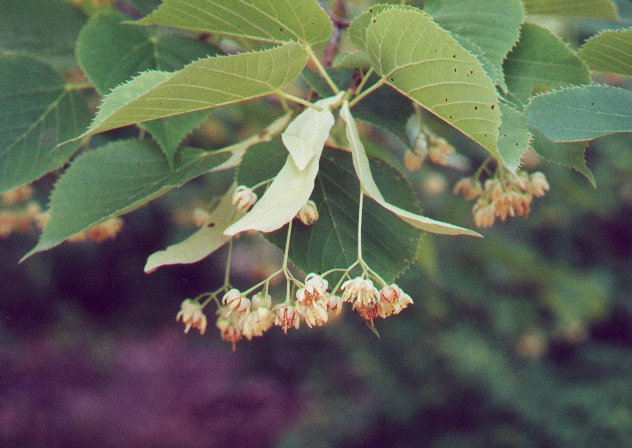Tilia americana L.
American Basswood

Native
CC = Amb
CW = 3
MOC = 81
© DETenaglia
Tilia americana L.American Basswood | |
 |
Native CC = Amb CW = 3 MOC = 81 |
© DETenaglia |
|
Family - Malvaceae Stems - A tree to 40m, with a single trunk or, typically, with more than two.
Leaves - Alternate, petiolate. Petiole to 10cm long, glabrous. Blade oblique at base, acuminate, serrate, to 20cm long, lower surface lighter green than upper surface and with hairs in tufts in axils of nerves, upper surface mostly glabrous. Teeth of blade with minute cilia on margins.
Inflorescence - Axillary open pendulous cymes from new seasons growth, with 5-8 flowers. Peduncle adnate to white bract for about half it's length, glabrous. Bract to +/-8cm long, to -1.5cm broad, glabrous except for few hairs near axil with peduncle, creamy-white. Pedicels to 7.5mm long, green, 1mm in diameter, glabrous.
Flowering - May - July. Habitat - Moist soils along stream banks and pond margins. Also in low woods. Origin - Native to U.S. Other info. - The wood of this species is highly desirable for furniture making because of its soft yet strong nature and its beautiful white color. Photographs taken at the Kansas City Zoo, 6-27-00, and at Whetstone Conservation Area, Callaway County, MO., 2-26-04. |